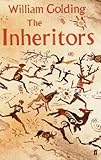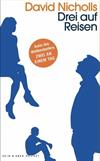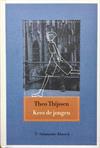
The Inheritors
Registered by  dark-draco
dark-draco of Ledbury, Herefordshire United Kingdom on 7/2/2010
of Ledbury, Herefordshire United Kingdom on 7/2/2010
 This Book is Currently in the Wild!
This Book is Currently in the Wild!
 dark-draco
dark-draco of Ledbury, Herefordshire United Kingdom on 7/2/2010
of Ledbury, Herefordshire United Kingdom on 7/2/2010 This Book is Currently in the Wild!
This Book is Currently in the Wild!
2 journalers for this copy...
Picked up at the local charity shop.
Journal Entry 2 by  dark-draco
dark-draco at Ledbury, Herefordshire United Kingdom on Wednesday, January 15, 2014
at Ledbury, Herefordshire United Kingdom on Wednesday, January 15, 2014
 dark-draco
dark-draco at Ledbury, Herefordshire United Kingdom on Wednesday, January 15, 2014
at Ledbury, Herefordshire United Kingdom on Wednesday, January 15, 2014
I really wasn't sure what to expect from this book - I suppose the only thing I can compare it to is the 'Earth Children' books by Jean Auel. It starts off as a very gentle story, with a Neanderthal family making their way to their summer home, a cave near the edge of a forest and a river. But a strange 'other people' are encamped nearby and the Neanderthals are mildly curious, unable to really understand who they are.
It takes a while to get into as the world and events are portrayed in an odd way - this is how the Neanderthal's view the things around them, in terms of 'pictures', sights and smells. But once you do, it opens up the story and you become completely immersed in it. The frustration of Lok as he tries to comprehend the others is palpable - and you feel very sad as the story progresses. The violence and deaths are needless - misunderstandings off two primitive people's trying to come to terms with the changing situation - it was almost heartbreaking.
The language of the novel is fantastic - evocative and rippling. The settings were instantly recognisable, almost familiar even though it takes place in a small area of a prehistoric world. I thought it was immensely clever to create this mild hate for the others in the reader, only to have that turned completely around as the viewpoint shifts in the last chapter. The futileness of the encounter is brought home - just another small conflict in the rise of Homo Sapians.
Well worth reading and highly recommended.
It takes a while to get into as the world and events are portrayed in an odd way - this is how the Neanderthal's view the things around them, in terms of 'pictures', sights and smells. But once you do, it opens up the story and you become completely immersed in it. The frustration of Lok as he tries to comprehend the others is palpable - and you feel very sad as the story progresses. The violence and deaths are needless - misunderstandings off two primitive people's trying to come to terms with the changing situation - it was almost heartbreaking.
The language of the novel is fantastic - evocative and rippling. The settings were instantly recognisable, almost familiar even though it takes place in a small area of a prehistoric world. I thought it was immensely clever to create this mild hate for the others in the reader, only to have that turned completely around as the viewpoint shifts in the last chapter. The futileness of the encounter is brought home - just another small conflict in the rise of Homo Sapians.
Well worth reading and highly recommended.
Journal Entry 3 by  dark-draco
dark-draco at -- Controlled Release, -- By post or by hand/ in person -- United Kingdom on Saturday, January 18, 2014
at -- Controlled Release, -- By post or by hand/ in person -- United Kingdom on Saturday, January 18, 2014
 dark-draco
dark-draco at -- Controlled Release, -- By post or by hand/ in person -- United Kingdom on Saturday, January 18, 2014
at -- Controlled Release, -- By post or by hand/ in person -- United Kingdom on Saturday, January 18, 2014
Released 10 yrs ago (1/18/2014 UTC) at -- Controlled Release, -- By post or by hand/ in person -- United Kingdom
CONTROLLED RELEASE NOTES:
Sent to America as a wishlist RABCK - hope you enjoy it...
"Caught" this in the mail today as a surprise international Wishlist RABCK! Thank you!
2005 Faber & Faber trade paperback of the 1955 classic. Ooh, Neanderthals. I love Neanderthals, because I am one. Seriously, I just had a great big aha moment when I heard that genetecists have determined that we European-derived moderns can attibute 70% of our hair and skin pigmentation color to Neanderthal genes. That is fantastic, and it now fills in the holes about our shared ancestry. Jean M. Auel told a great story and broke new ground by being the first to intermarry these two peoples. If Golding does not get into that here first, of course. But Auel had it completely backwards, with her heroine Ayla being a tall, statuesque fair-skinned blonde sapiens.
Genetecists have traced our out-of-Africa populations to two main groups, after some 65 thousand years ago there was a population crash in Africa, and a small band of survivors crosed from Djbouti on the northern coast of the Horn of Africa, through the narrow shallow water of the Bab el Mandeb straight, and into southern Yemen: A southern group went far eastward along the coast, down through India, and beyond to all over southern Asia. The genetically oldest of this southern group now reside along the west coast of Burma or Thailand, I believe is what I have head.
And then from that group branched off the northern group, which later populated Europe. So here is my theory: These sapiens were all very dark-skinned people, who lived along equatorial Africa. Northern Africa was unpopulated, because of the Great Sahara Desert on the west and the Ethiopian mountain range and the headwaters of the Nile on the east. Southern Africa has a more temperate climate, but is geographically very small, and so any developing lighter-skinned populations there would have been continuously genetically swamped by waves of darker people from the much more populous wide stretch of the equatorial northern region. So the out of Africa sapiens were dark, with an excess of melanin to block the damaging sun rays.
The next part of the puzzle is that geneticists have detemined that our oldest European origins are from people around the Ural Mountains of central Russia. But why there, of all unlikely places?
Our Homo erectus root and related ancestors were all over the place, from five million years ago, in Africa, Europe, and Asia. Archaic sapiens and then modern sapiens arose only in Africa, the most recent group. But Neanderthals arouse some 1 million to 200,000 years ago directly in Europe, I think is correct, and then spread out eastward from there into central Europe and northern Asia. Or it could have been the reverse, but in any case they did not populate Africa, or much of the Middle East and southern Asia.
So, in Europe, with cold climates and low levels of sunlight, they covered their bodies for warmth, and as a consequence the ones with darker skin had more melanin that blocked the benefits of sunlight on body health. The ones with progressively lighter skin, less melanin, absorbed more of these benefits, while gaining little risk from sun damage. So the balance over hundreds of thousands of years favored evolution into light-skinned Neanderthals. The darker ones became genetically swamped.
Sapiens, on the other hand, remained dark. They were never blond and fair, as the fictional Ayla. They had at most some 20 thousand years in which to cross paths and interbreed with Neanderthals. A sapiens of the time would have been much like a dark African of today. Whereas a Neanderthal would have looked much like a burly Irishman, or Celt.
Now here is the best part of my theory, the actual sapiens migration to the Ural mountains. Follow the coast of Yemen and Arabia eastward, as with the southern group, and then veer north. But rather than continue east along the delta coast into India, go north, into the swamps above northern Kuwait. You are right at the mouth of the Euphrates River. Then follow the river all the way north, into upper Iraq, eastern Turkey, past Mount Ararat. Coincidence that that Biblical name appears on this route? I think not.
Now you go a very short way down the northern side of the moutain range, and you are suddenly on the far eastern coast of the Black Sea. This sea is thought to be the origin of the flood story of Noah and Gilgamesh, based on a real massive flood in 5550 BCE. But our little band of dark-skinned sapiens is just passing through, still some 40,000 years erlier than that flood.
Now, it is just a few miles forther that we travel up the coast of the Black Sea, through Georgia, and along the western Caucusus range, for which the caucasian euphemism for white people was derived. Still following the coast a few miles northwest, we now pass the straight separating us from Crimea. So we turn northeast, now passing along the coast of the small sea that separates Ukraine and Crimea on the west from the tip of southern Russia on the east.
Now we hit the great Dan River, which here runs east toward Volgograd, before turning northwest. We can continue to follow that river toward Europe. But, our little band goes just a few miles east across the flat land of the steppes, and there we are right on the banks of a sharp bend in the mighty Volga River.
We now follow this river many miles north, into the heart of the Ural Mountains, and we find the hardy fair-skinned Neanderthals resident there. Our sapiens kin who mated with the southern Neanderthals were simply genetically swamped. They had no advantage or disadvantage, and the Neanderthals there were much too numerous to be reduced by a few sapiens migrants.
But in the cold north of the upper Volga, our little dark sapiens band may have been nearly wiped out, except for mating with the light Neanderthals. In fact, the light pigment of the Neanderthals became a huge factor of survival there, in combination with some as yet unclear advantage from the vast majority of sapiens genes. And that particular combined population is what then exploded genetically, swamping both the native Neanderthal out, and also swamping out the dark sapiens who did not interbreed.
So, some 35,000 years ago this particular mixed population, 70% Neanderthal only in pigment, but 95% sapiens in everything else, had the right mix of genes so that they then grew rapidly and spread into all sorts of climates and ranges, along the great vast strech both west into Europe, and east into northern Asia, and south back into the Middle East, and they swamped every other population they then encountered along the way, virtually wiping out all other peoples, except for Africa, which now remained unreachable in the rising sea levels of the thaw of the end of the great Ice Age.
That's my theory, subject to minor later revision. Of course today with much better diets skin pigment matters little for survival. But I think it clearly tipped the balance back then and there, as sapiens were probably only very marginal survivors in the far reaches of the cold north. It was not until they gained that clear advantage of 70% pigmentation from Neanderthals that they were truly able to thrive and prosper.
And likewise, Neanderthals had survived in the cold northern climes quite well for much longer. And with the end of the Ice Age, they still might have survived and prospered for much longer. But when mixed with this particular group of sapiens, the combination created a far superior survivor group, perhaps related to culture, through more efficient use of language, art, ability to communicate best across generations about far flung food sources and changing conditions.
Or it may have just been a better location to start from. It was much easier for this population to dominate by greater numbers, simply by spreading across a vast territory west and east. Whereas southern populations, with much less early Neanderthal genes, were trapped in several small geographic land islands, separated from each other by oceans, seas, and mountains. So in the south, we got only isolated groups with probably smaller populations: Semitics, Persians, Indians, mountain Asians, southeast island Asians, and to the far east isolated Chinese and Mongols, and many smaller isolated groups.
But the northern central sapiens hybrids swarmed south, and by 5550 BCE populated the Black sea region and the northern Mediterranean, where they then developed the great flood myth mentioned eariler, and then carried it down past Mount Ararat again, and into the fertile crescent of Mesopotamia, where they had already begun to develop and then excel with agrriculture along the banks of the Tigris and Euphrates Rivers. From there we got the next great population explosion, the huge populations of the great city states of the Middle East, and the Indo-European root of a vast number of related languages stretching the vast distance from the North Sea to the Bay of Bengal.
Of course little of this has to do directly with this book, but I needed a good public space to write it all down. :) Thanks!
I can let this go after I read:
1954 Lord of the Flies [read 2014]
Edit March 17, 2018: This was very good, but it takes a lot of paying close attention just to figure out what is going on in each moment, from the Neanderthal perspective. I currently have this ranked at #344 on my ranked list of best-read books lately.
2005 Faber & Faber trade paperback of the 1955 classic. Ooh, Neanderthals. I love Neanderthals, because I am one. Seriously, I just had a great big aha moment when I heard that genetecists have determined that we European-derived moderns can attibute 70% of our hair and skin pigmentation color to Neanderthal genes. That is fantastic, and it now fills in the holes about our shared ancestry. Jean M. Auel told a great story and broke new ground by being the first to intermarry these two peoples. If Golding does not get into that here first, of course. But Auel had it completely backwards, with her heroine Ayla being a tall, statuesque fair-skinned blonde sapiens.
Genetecists have traced our out-of-Africa populations to two main groups, after some 65 thousand years ago there was a population crash in Africa, and a small band of survivors crosed from Djbouti on the northern coast of the Horn of Africa, through the narrow shallow water of the Bab el Mandeb straight, and into southern Yemen: A southern group went far eastward along the coast, down through India, and beyond to all over southern Asia. The genetically oldest of this southern group now reside along the west coast of Burma or Thailand, I believe is what I have head.
And then from that group branched off the northern group, which later populated Europe. So here is my theory: These sapiens were all very dark-skinned people, who lived along equatorial Africa. Northern Africa was unpopulated, because of the Great Sahara Desert on the west and the Ethiopian mountain range and the headwaters of the Nile on the east. Southern Africa has a more temperate climate, but is geographically very small, and so any developing lighter-skinned populations there would have been continuously genetically swamped by waves of darker people from the much more populous wide stretch of the equatorial northern region. So the out of Africa sapiens were dark, with an excess of melanin to block the damaging sun rays.
The next part of the puzzle is that geneticists have detemined that our oldest European origins are from people around the Ural Mountains of central Russia. But why there, of all unlikely places?
Our Homo erectus root and related ancestors were all over the place, from five million years ago, in Africa, Europe, and Asia. Archaic sapiens and then modern sapiens arose only in Africa, the most recent group. But Neanderthals arouse some 1 million to 200,000 years ago directly in Europe, I think is correct, and then spread out eastward from there into central Europe and northern Asia. Or it could have been the reverse, but in any case they did not populate Africa, or much of the Middle East and southern Asia.
So, in Europe, with cold climates and low levels of sunlight, they covered their bodies for warmth, and as a consequence the ones with darker skin had more melanin that blocked the benefits of sunlight on body health. The ones with progressively lighter skin, less melanin, absorbed more of these benefits, while gaining little risk from sun damage. So the balance over hundreds of thousands of years favored evolution into light-skinned Neanderthals. The darker ones became genetically swamped.
Sapiens, on the other hand, remained dark. They were never blond and fair, as the fictional Ayla. They had at most some 20 thousand years in which to cross paths and interbreed with Neanderthals. A sapiens of the time would have been much like a dark African of today. Whereas a Neanderthal would have looked much like a burly Irishman, or Celt.
Now here is the best part of my theory, the actual sapiens migration to the Ural mountains. Follow the coast of Yemen and Arabia eastward, as with the southern group, and then veer north. But rather than continue east along the delta coast into India, go north, into the swamps above northern Kuwait. You are right at the mouth of the Euphrates River. Then follow the river all the way north, into upper Iraq, eastern Turkey, past Mount Ararat. Coincidence that that Biblical name appears on this route? I think not.
Now you go a very short way down the northern side of the moutain range, and you are suddenly on the far eastern coast of the Black Sea. This sea is thought to be the origin of the flood story of Noah and Gilgamesh, based on a real massive flood in 5550 BCE. But our little band of dark-skinned sapiens is just passing through, still some 40,000 years erlier than that flood.
Now, it is just a few miles forther that we travel up the coast of the Black Sea, through Georgia, and along the western Caucusus range, for which the caucasian euphemism for white people was derived. Still following the coast a few miles northwest, we now pass the straight separating us from Crimea. So we turn northeast, now passing along the coast of the small sea that separates Ukraine and Crimea on the west from the tip of southern Russia on the east.
Now we hit the great Dan River, which here runs east toward Volgograd, before turning northwest. We can continue to follow that river toward Europe. But, our little band goes just a few miles east across the flat land of the steppes, and there we are right on the banks of a sharp bend in the mighty Volga River.
We now follow this river many miles north, into the heart of the Ural Mountains, and we find the hardy fair-skinned Neanderthals resident there. Our sapiens kin who mated with the southern Neanderthals were simply genetically swamped. They had no advantage or disadvantage, and the Neanderthals there were much too numerous to be reduced by a few sapiens migrants.
But in the cold north of the upper Volga, our little dark sapiens band may have been nearly wiped out, except for mating with the light Neanderthals. In fact, the light pigment of the Neanderthals became a huge factor of survival there, in combination with some as yet unclear advantage from the vast majority of sapiens genes. And that particular combined population is what then exploded genetically, swamping both the native Neanderthal out, and also swamping out the dark sapiens who did not interbreed.
So, some 35,000 years ago this particular mixed population, 70% Neanderthal only in pigment, but 95% sapiens in everything else, had the right mix of genes so that they then grew rapidly and spread into all sorts of climates and ranges, along the great vast strech both west into Europe, and east into northern Asia, and south back into the Middle East, and they swamped every other population they then encountered along the way, virtually wiping out all other peoples, except for Africa, which now remained unreachable in the rising sea levels of the thaw of the end of the great Ice Age.
That's my theory, subject to minor later revision. Of course today with much better diets skin pigment matters little for survival. But I think it clearly tipped the balance back then and there, as sapiens were probably only very marginal survivors in the far reaches of the cold north. It was not until they gained that clear advantage of 70% pigmentation from Neanderthals that they were truly able to thrive and prosper.
And likewise, Neanderthals had survived in the cold northern climes quite well for much longer. And with the end of the Ice Age, they still might have survived and prospered for much longer. But when mixed with this particular group of sapiens, the combination created a far superior survivor group, perhaps related to culture, through more efficient use of language, art, ability to communicate best across generations about far flung food sources and changing conditions.
Or it may have just been a better location to start from. It was much easier for this population to dominate by greater numbers, simply by spreading across a vast territory west and east. Whereas southern populations, with much less early Neanderthal genes, were trapped in several small geographic land islands, separated from each other by oceans, seas, and mountains. So in the south, we got only isolated groups with probably smaller populations: Semitics, Persians, Indians, mountain Asians, southeast island Asians, and to the far east isolated Chinese and Mongols, and many smaller isolated groups.
But the northern central sapiens hybrids swarmed south, and by 5550 BCE populated the Black sea region and the northern Mediterranean, where they then developed the great flood myth mentioned eariler, and then carried it down past Mount Ararat again, and into the fertile crescent of Mesopotamia, where they had already begun to develop and then excel with agrriculture along the banks of the Tigris and Euphrates Rivers. From there we got the next great population explosion, the huge populations of the great city states of the Middle East, and the Indo-European root of a vast number of related languages stretching the vast distance from the North Sea to the Bay of Bengal.
Of course little of this has to do directly with this book, but I needed a good public space to write it all down. :) Thanks!
I can let this go after I read:
1954 Lord of the Flies [read 2014]
Edit March 17, 2018: This was very good, but it takes a lot of paying close attention just to figure out what is going on in each moment, from the Neanderthal perspective. I currently have this ranked at #344 on my ranked list of best-read books lately.
Journal Entry 5 by eastbaybookmisr at Little Free Library - 21772 Tanglewood Drive in Castro Valley, California USA on Sunday, March 18, 2018
Released 6 yrs ago (3/18/2018 UTC) at Little Free Library - 21772 Tanglewood Drive in Castro Valley, California USA
WILD RELEASE NOTES:
... in the box.
And please visit the next meetup of TriValley BookCrossing group, at Panera Bread in Dublin, the second Tuesday of each month.
And if you are now hoping to catch or release another book, but don't know where, check out my home page for a full list of all the local Little Free Libraries and other great release zones, where books can be safely left and found!
Aside from loving shared books, my main passion in life is supporting the human rights work of my good friend, Anni Cyrus. 💖 💖 Her life story of survival as a childhood refugee is astounding, and quite moving!
Please look her up on Google and YouTube. You can also follow her on Facebook and Instagram, among other platforms.
And please visit the next meetup of TriValley BookCrossing group, at Panera Bread in Dublin, the second Tuesday of each month.
And if you are now hoping to catch or release another book, but don't know where, check out my home page for a full list of all the local Little Free Libraries and other great release zones, where books can be safely left and found!
Aside from loving shared books, my main passion in life is supporting the human rights work of my good friend, Anni Cyrus. 💖 💖 Her life story of survival as a childhood refugee is astounding, and quite moving!
Please look her up on Google and YouTube. You can also follow her on Facebook and Instagram, among other platforms.
















